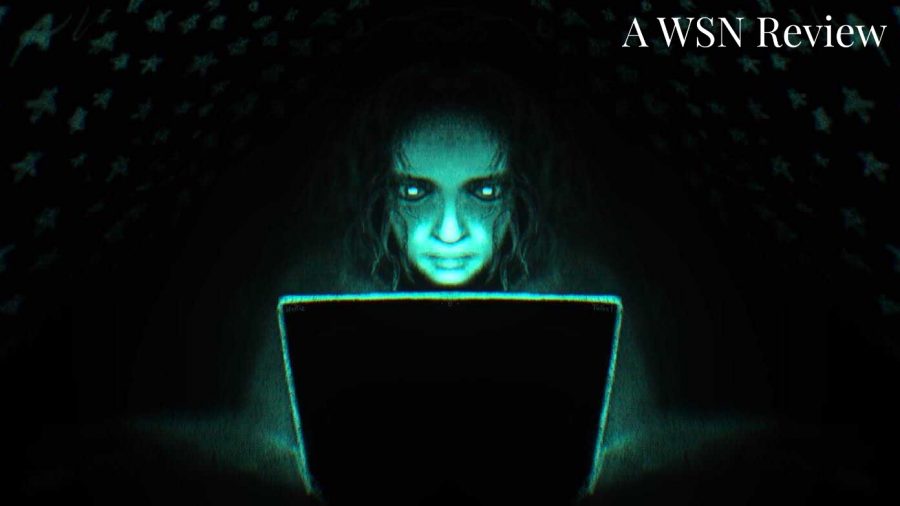‘We’re All Going to the World’s Fair’ offers a strange spin on the coming-of-age genre
Directed by Jane Schoenburn, “We’re All Going to the World’s Fair” offers an alternative coming-of-age tale for horror aficionados. The film is currently playing as part ND/NF 2021.
‘We’re All Going to the World’s Fair’ is an original coming-of-age horror film that explores the experience of a young girl coming up in today’s lonely internet-age. (Illustration by Lucy Geronime)
May 5, 2021
“We’re All Going to the World’s Fair” perfectly encapsulates the humdrum existence of the modern American teen who spends their time scouring the internet with the hopes of finding something to help them pass the time.
Directed by Jane Schoenbrun, “We’re All Going to the World’s Fair” falls somewhere between “Eighth Grade” and “Slender Man.” It’s a strange blend and, for the most part, it doesn’t work. For all its new ideas, clever camera tricks and strong performances, the film ends up regurgitating the same point made by every film about the internet since the internet was created: being online means you’re lonely.
From the opening shot of the film, a mesmeric, long, still shot with enough boiling creepiness to make your hairs sprout straight out of your skin, we’re introduced to Casey (Anna Cobb). Casey is uncool by common standards. She’s in high school but still sleeps with a plushie and doesn’t seem to have any friends. As if she weren’t isolated enough, it also doesn’t help that her parents are neglectful, leading to a turbulent home life. She’s always relegated to the attic, where she does most of her internet browsing.
With no one to talk to, she spends her time online or walking through the woods. And as if it weren’t clear enough that Casey is lonely, Alex G’s score is sure to convince you. The film is made for the forsaken residents of rooms whose screens represent escape.
Casey finds a means of escaping her reality by retreating into a horror-themed internet challenge that allows her to become a part of something surreal and enlivening. In order to join the “We’re All Going to the World’s Fair Challenge,” participants must prick their thumbs and smear blood across their computer screens. Upon joining, players claim to have undergone mind-bending shifts in perception, feeling as if reality itself is actively working to alienate them.
One YouTuber reports his body being replaced by Tetris blocks, and another describes losing all sense of feeling, slapping themself on screen to prove the point. It’s freaky stuff, and you’re never quite sure whether any of it is real or not. So when Casey begins reporting similar symptoms, a deep nervousness arises. The audience is unsure as to whether she’s being tormented by supernatural forces or playing a part and hurting herself to foster connection among anonymous internet users who share similar interests.
This becomes all the more pressing when another player, who goes by the username JLB (Michael J. Rogers), contacts her. He too, is lonely. But he also happens to be middle-aged.
As such, Schoenbrun’s film becomes a delicate portrait of vulnerable individuals rummaging the internet with the hopes of coming in contact with someone who’ll be there for them. It’s saddening material, but it’s truthful. The only issue is that it doesn’t ring as true as it seems because it’s diluted by strange specks of commerciality that hinder the film’s very attempts at being bizarre and disturbing.
In a way, the film is Alex-G-ified: it is the perfect example of a strange idea succumbing to the current understanding of independent cinema as a commodity that situates strangeness within digestible narrative trappings. For all its wondrous imaginative internet lore, “We’re All Going to the World’s Fair” is nothing more than a coming-of-age tale scored by a famous indie musician who caters to misunderstood teens.
In a way, the film offers an alternative coming-of-age tale to what’s expected of mainstream cinema by infusing it with elements of some sort of new digital horror. But, in another way, “We’re All Going to the World’s Fair” satisfies what’s expected of a coming-of-age film by adhering to narrative conventions that demand a story move from beginning to end in a manner that ties everything up in a pretty bow. Rather than rely on the ambiguity of its premise (that Casey may be stuck in a cybernetic fever dream), the film chooses to destroy the myth it cultivates in order to arrive at something more tangible: the all-too-familiar idea that teenagers have always struggled, but now they have to deal with the internet.
Contact Nicolas Pedrero-Setzer at [email protected].

























































































































































